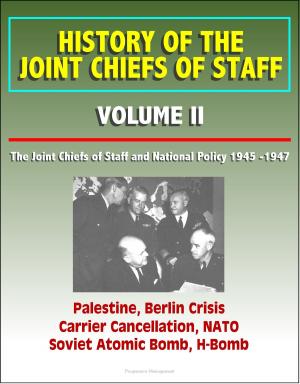Knockout Blow? The Army Air Force's Operations Against Ploesti and Balikpapan: World War II Oil Refinery Bombings in Europe and the Pacific, Tactical Answers, Strategic Questions
Nonfiction, History, Military, Aviation, World War II| Author: | Progressive Management | ISBN: | 9781310990427 |
| Publisher: | Progressive Management | Publication: | January 13, 2016 |
| Imprint: | Smashwords Edition | Language: | English |
| Author: | Progressive Management |
| ISBN: | 9781310990427 |
| Publisher: | Progressive Management |
| Publication: | January 13, 2016 |
| Imprint: | Smashwords Edition |
| Language: | English |
Professionally converted for accurate flowing-text e-book format reproduction, this unique publication analyzes the US Army Air Force's Ploesti and Balikpapan oil refinery bombing operations in WW II. The author determines that these operations highlight organizational and leadership differences that have implications for today. The writer first recounts the 1943 low-level raid against Ploesti. The conclusion is that the strategic and tactical concepts for this first raid were flawed, leading to heavy losses without any appreciable benefit. The author then describes the US Strategic Air Force's sustained operations against Ploesti during 1944. This examination shows that the Americans linked these attacks with a more realistic strategy and thus contributed significantly to Allied war aims. However, slow tactical change characterized the 1944 operations, leading to heavy cumulative losses in the pursuit of strategic effects. The author next turns to the surprisingly parallel Balikpapan operation in the Pacific. The writer initially recounts the first two large-scale bombing operations during September and October 1944. The conclusion is that these initial operations, like the first Ploesti attack, contained major strategic and tactical flaws. The author then highlights how FEAF radically revamped it tactics and overwhelmed the defenses in the following raids. However, FEAF's strategy remained flawed, thus the raids contributed little to the defeat of Japan. In the last section, the author explores the dissimilarity in the outcome of the operations. He concludes that USSTAF, with its strategically-focused leader and large bureaucratic organization, was well equipped to develop strategy but not predisposed for rapid tactical adaptation. FEAF, on the other hand, with its tactically-focused leader and relatively flat organizational structure, was optimized for tactical innovation but was ill-prepared to link these operations with a broader purpose.
Chapter 1 - Ploesti - the Cauldron * Chapter 2 - Ploesti - A comprehensive approach to limited objectives * Chapter 3 - Balikpapan - Big distance, Big target * Chapter 4 - Balikpapan - Tactical Answers, Strategic Questions * Chapter 5 - Opposite sides of the world - Comparisons, contrasts, and analysis
Professionally converted for accurate flowing-text e-book format reproduction, this unique publication analyzes the US Army Air Force's Ploesti and Balikpapan oil refinery bombing operations in WW II. The author determines that these operations highlight organizational and leadership differences that have implications for today. The writer first recounts the 1943 low-level raid against Ploesti. The conclusion is that the strategic and tactical concepts for this first raid were flawed, leading to heavy losses without any appreciable benefit. The author then describes the US Strategic Air Force's sustained operations against Ploesti during 1944. This examination shows that the Americans linked these attacks with a more realistic strategy and thus contributed significantly to Allied war aims. However, slow tactical change characterized the 1944 operations, leading to heavy cumulative losses in the pursuit of strategic effects. The author next turns to the surprisingly parallel Balikpapan operation in the Pacific. The writer initially recounts the first two large-scale bombing operations during September and October 1944. The conclusion is that these initial operations, like the first Ploesti attack, contained major strategic and tactical flaws. The author then highlights how FEAF radically revamped it tactics and overwhelmed the defenses in the following raids. However, FEAF's strategy remained flawed, thus the raids contributed little to the defeat of Japan. In the last section, the author explores the dissimilarity in the outcome of the operations. He concludes that USSTAF, with its strategically-focused leader and large bureaucratic organization, was well equipped to develop strategy but not predisposed for rapid tactical adaptation. FEAF, on the other hand, with its tactically-focused leader and relatively flat organizational structure, was optimized for tactical innovation but was ill-prepared to link these operations with a broader purpose.
Chapter 1 - Ploesti - the Cauldron * Chapter 2 - Ploesti - A comprehensive approach to limited objectives * Chapter 3 - Balikpapan - Big distance, Big target * Chapter 4 - Balikpapan - Tactical Answers, Strategic Questions * Chapter 5 - Opposite sides of the world - Comparisons, contrasts, and analysis















